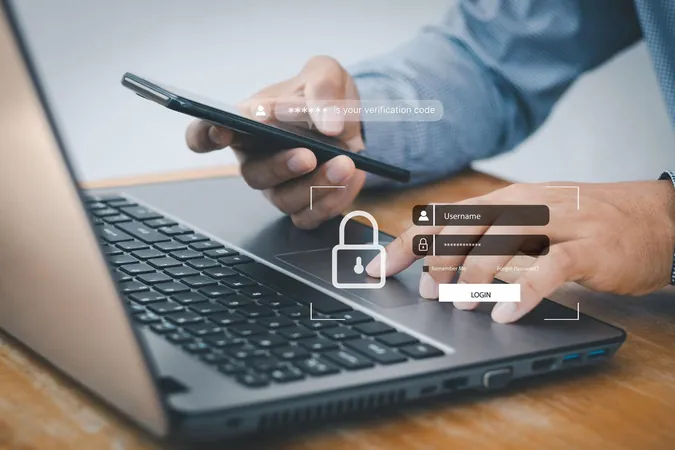
Beware of Two-Step Phishing Attacks: A New Wave of Cyber Threats Unveiled!
2024-11-18
Author: Ting
In a startling update to our previous report, new evidence has surfaced regarding alarming tactics being exploited by cybercriminals in an increasingly complex landscape of phishing attacks. As security experts frequently advise, a layered defense is crucial to repel cyber threats, but it appears that attackers are adopting similar strategies to outmaneuver security measures. Recent findings from Perception Point reveal a dramatic increase in two-step phishing attacks that leverage Microsoft Visio files, posing an ever-growing risk to unsuspecting users worldwide.
The Evolution of Cybercrime: A New Methodology Emerges
According to threat analysts, Microsoft Visio's .vsdx file format—commonly used by corporations for data visualization—has become a favored tool for cybercriminals. This method banks on what researchers call “harmless familiarity,” where the disguise of a trusted application lures victims into a false sense of security. The attackers then craft sophisticated strategies to deliver malicious URLs disguised as business proposals or invoices, triggering this new wave of two-step phishing attacks.
A report by Perception Point suggests that these attacks have been carefully orchestrated to target hundreds of organizations globally, deploying a new layer of deception intended to bypass detection mechanisms. By initially utilizing compromised email accounts to send seemingly legitimate correspondence, attackers can evade basic email authentication checks and ensnare victims more effectively.
How the Two-Step Phishing Trap Works
Once a victim is reeled in by clicking on a link contained in the email, they are often redirected to a fake page resembling a genuine Microsoft SharePoint site. Here, they believe they are viewing a .vsdx file, but lurking within it is another malicious URL masked behind a seemingly innocent "view document" button.
A particularly insidious ploy involves instructing victims to "hold down the Ctrl key and click" to access the embedded link. This clever maneuver aims to dodge email security scanners that might not recognize such behavior as a threat. Ultimately, users are directed to a counterfeit Microsoft 365 login page crafted to steal their credentials. To mitigate the risk from these threats, implementing robust two-factor authentication is an essential protective measure.
A New Twist: Scalable Vector Graphics and Credential Theft
Furthermore, our investigation reveals that cybercriminals are not only relying on Visio files but are also employing scalable vector graphics (SVG) in their phishing strategies. SVG files are increasingly being used to display misleading forms or execute malware, taking advantage of their unique construction that often escapes detection from standard security software. Cyber experts have highlighted that SVG files can contain hidden HTML and JavaScript—allowing for the creation of deceptive login forms capable of capturing login credentials before the victim even realizes the threat.
Staying Safe: How to Protect Yourself from Cyber Attacks
In light of these alarming developments, it's crucial to remain vigilant. Users should examine incoming files—a beachhead for most cyber attacks—closely. If you receive an SVG attachment that falls outside your usual work practice, treat it with skepticism. Always ask yourself if a file is genuinely necessary and verify the legitimacy of the sender. Remember, the most effective defense against these advanced cyber threats is you.
As cybercriminals continue to evolve their tactics, staying informed and cautious can help shield you and your organization from their grasp. Don't let the next phishing attack be the one that gets you!





 Brasil (PT)
Brasil (PT)
 Canada (EN)
Canada (EN)
 Chile (ES)
Chile (ES)
 España (ES)
España (ES)
 France (FR)
France (FR)
 Hong Kong (EN)
Hong Kong (EN)
 Italia (IT)
Italia (IT)
 日本 (JA)
日本 (JA)
 Magyarország (HU)
Magyarország (HU)
 Norge (NO)
Norge (NO)
 Polska (PL)
Polska (PL)
 Schweiz (DE)
Schweiz (DE)
 Singapore (EN)
Singapore (EN)
 Sverige (SV)
Sverige (SV)
 Suomi (FI)
Suomi (FI)
 Türkiye (TR)
Türkiye (TR)